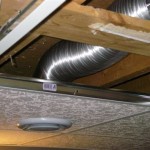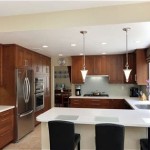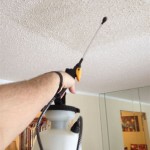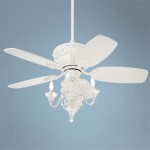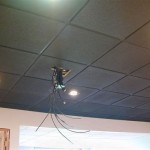What Size Ceiling Fan Should I Get For My Living Room And Kitchen?
Selecting the appropriate size ceiling fan for a living room and kitchen is crucial for optimizing airflow, maximizing energy efficiency, and enhancing overall comfort. A fan that is too small will struggle to circulate air effectively, leaving stagnant spots within the room. Conversely, an oversized fan may create excessive drafts or feel visually overwhelming. Determining the ideal fan size requires careful consideration of the room's dimensions, ceiling height, and intended use.
Several factors influence the effectiveness of a ceiling fan. Blade span, measured from the tip of one blade to the tip of the opposite blade, is the primary determinant of airflow. Motor size and blade pitch also play a role, but selecting the correct blade span is the foundational step. Inadequate airflow can lead to discomfort, increased energy consumption from heating and cooling systems, and a perpetuation of stale air. Conversely, good airflow contributes to a more comfortable and energy-efficient living space.
The following sections provide a comprehensive guide to determining the appropriate ceiling fan size for various living room and kitchen configurations. It will cover a range of room sizes, special considerations for kitchens, and the impact of ceiling height on fan performance. It will also address factors such as aesthetics and the integration of lighting fixtures into the fan design, helping individuals make informed decisions about their ceiling fan selections.
Calculating Room Size and Corresponding Fan Size
The first step in selecting the correct ceiling fan size involves accurately measuring the dimensions of the living room or kitchen. This entails determining the length and width of the room in feet. Once these measurements are obtained, the area of the room can be calculated by multiplying the length by the width. This area, expressed in square feet, is the key metric used to determine the appropriate blade span for the ceiling fan.
General guidelines exist for correlating room area to ceiling fan blade span. For rooms up to 75 square feet, a ceiling fan with a blade span of 36 inches or less is generally sufficient. These smaller fans are well-suited for small kitchens, breakfast nooks, or compact living rooms. For rooms ranging from 76 to 144 square feet, a 42-inch ceiling fan is typically recommended. These mid-sized fans are suitable for average-sized kitchens and smaller living rooms or dining areas.
For rooms between 144 and 225 square feet, a 52-inch ceiling fan is usually optimal. This is a common size for living rooms and larger kitchens. For larger spaces, ranging from 225 to 400 square feet, a 56-inch or larger ceiling fan is necessary to provide adequate airflow. In very large rooms, exceeding 400 square feet, consider using multiple ceiling fans strategically placed to ensure even air circulation throughout the space. Alternatively, a single extra-large fan, often 60 inches or more in diameter, may be appropriate.
These guidelines are general recommendations, and other factors, such as ceiling height, room layout, and personal preferences, should also be taken into account. However, using the room's square footage as a starting point provides a solid foundation for selecting the appropriate ceiling fan size.
Special Considerations for Kitchens
Kitchens present unique challenges and considerations when selecting a ceiling fan. Unlike living rooms, kitchens are often subject to higher levels of heat, humidity, and airborne particles from cooking. These factors can impact the performance and longevity of a ceiling fan. Therefore, selecting a fan specifically designed for kitchen use is often advisable.
One crucial factor is the fan's motor. Kitchens require fans with more robust motors capable of withstanding the demanding environment. Look for fans with sealed motors that are less susceptible to damage from grease, moisture, and dust. These sealed motors are typically more durable and require less maintenance than standard motors.
Material selection is also important. Choose fans with blades made from materials that are resistant to warping and discoloration due to heat and humidity. ABS plastic and treated wood blades are good options for kitchens. Avoid fans with fabric or highly porous blades, as these can easily absorb odors and grease, becoming difficult to clean and potentially harboring bacteria.
Lighting is another key consideration in kitchens. A ceiling fan with an integrated light fixture is often necessary to provide adequate illumination for food preparation and other tasks. Opt for fans with bright, energy-efficient LED lighting. Consider the color temperature of the light, choosing a warm white or daylight option for optimal visibility.
Finally, consider the fan's location relative to cooking appliances. Avoid placing the fan directly above a stove or cooktop, as this can disrupt the airflow and potentially spread grease and odors throughout the room. A location that promotes general air circulation without directly interfering with cooking is ideal.
The Impact of Ceiling Height
Ceiling height is a critical factor to consider when selecting a ceiling fan for both living rooms and kitchens. The height of the ceiling directly impacts the fan's ability to effectively circulate air. Standard ceiling heights of 8 feet typically require a flush-mount or hugger-style ceiling fan, which sits close to the ceiling. This ensures that the fan blades are not too close to the floor, posing a safety hazard, and that adequate headroom is maintained.
For ceilings between 9 and 10 feet high, a downrod is typically required to lower the fan to the optimal height for air circulation. A downrod is a metal extension that connects the fan motor to the ceiling mount. The appropriate downrod length depends on the specific ceiling height and the fan's design. Generally, the bottom of the fan blades should be at least 7 feet from the floor.
For ceilings taller than 10 feet, longer downrods are necessary to ensure that the fan is positioned at an effective height. Consult the fan manufacturer's recommendations for downrod length based on ceiling height. For extremely high ceilings, consider using a longer downrod or a high-volume, low-speed (HVLS) fan designed for large spaces with tall ceilings. These HVLS fans are typically more expensive but can move a significant amount of air and provide better overall air circulation in very tall rooms.
When installing a ceiling fan with a downrod, ensure that the downrod is securely attached to both the fan motor and the ceiling mount. Use appropriate hardware and follow the manufacturer's instructions carefully. A wobbly or unstable ceiling fan can be a safety hazard. Also, consider the aesthetic impact of the downrod. Choose a downrod finish that complements the fan's design and the overall decor of the room.
Aesthetics and Lighting Considerations
Beyond functionality, the aesthetic appearance of a ceiling fan is an important consideration for many homeowners. Ceiling fans are often a prominent feature in a room, and their design should complement the overall decor. A wide range of styles, finishes, and blade designs are available, allowing individuals to select a fan that aligns with their personal preferences and the room's aesthetic.
Consider the existing style of the living room or kitchen. In a modern space, a sleek, minimalist fan with clean lines and a brushed nickel or matte black finish may be appropriate. In a more traditional setting, a fan with ornate details, wooden blades, and an antique bronze finish may be a better fit. Industrial-style fans with exposed hardware and metal cages are well-suited for loft spaces or contemporary kitchens.
The blade design can also significantly impact the fan's appearance. Straight blades offer a clean, contemporary look, while curved blades can add a touch of elegance. Blades made from different materials, such as wood, metal, or plastic, can also create different aesthetic effects. Consider the color and texture of the blades in relation to the other elements in the room.
Lighting is another important aesthetic and functional consideration. Many ceiling fans come with integrated light fixtures, which can provide ambient or task lighting. Choose a fan with a lighting style that complements the fan's overall design and the room's existing lighting scheme. LED lighting is a popular choice for its energy efficiency and long lifespan. Adjustable lighting features, such as dimming and color temperature control, can also enhance the functionality and ambiance of the fan.
Finally, consider the size and scale of the fan in relation to the room. A fan that is too large can overwhelm the space, while a fan that is too small may appear insignificant. Pay attention to the proportions of the fan and its components, such as the motor housing and the blade span, in relation to the room's dimensions. A well-proportioned fan will enhance the room's aesthetic appeal and provide optimal airflow.

Ceiling Fan Size Guide Delmarfans Com

Ceiling Fan Size Guide Delmarfans Com

How To Buy A Ceiling Fan Four Step Guide Lamps Plus

Ceiling Fan Size Guide Delmarfans Com

Choosing The Right Size Ceiling Fan For Your Room

What Size Ceiling Fan Do You Need For Your Room Dan S City Fans Parts Accessories

Ceiling Fan Size Guide Delmarfans Com

Ceiling Fan Size Guide Delmarfans Com

Tips For Installing A Ceiling Fan Mccoy S

How To Choose A Ceiling Fan Create The Perfect Personalized Cooling Space In Your Home
Related Posts

